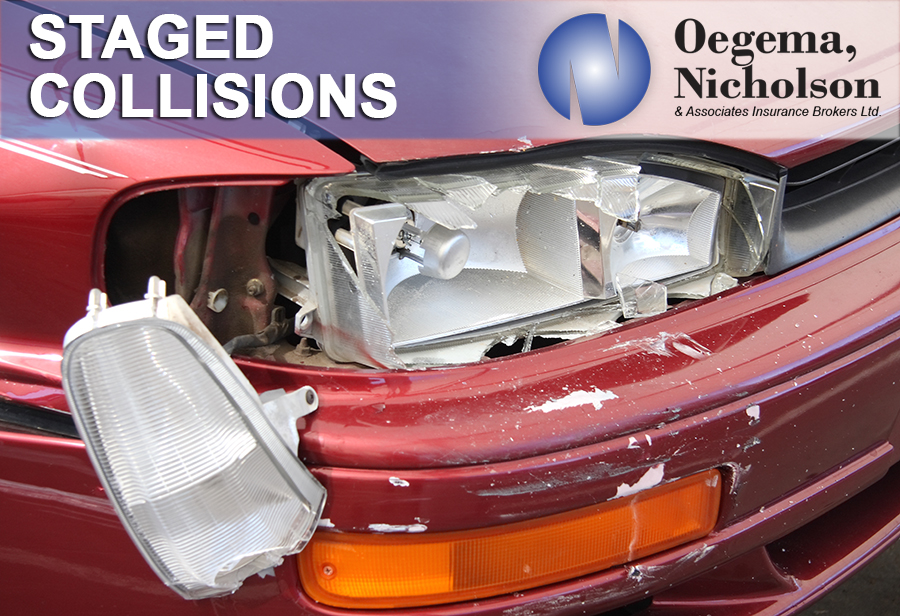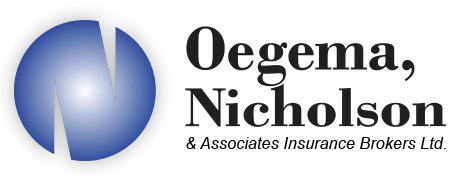
Auto Insurance Fraud: How to Protect Yourself from Staged Collisions
Staged collisions are “accidents” on the road that are, in reality, not accidents at all. Unfortunately, there are people out there who will put your health and financial wellbeing on the line… for the benefit of their own pocketbooks. Sometimes, collisions are staged between two willing participants that are part of the same fraudulent ring. In other cases, they entrap unknowing participants. Besides the incredible risk that this puts innocent people at, staged accidents and auto insurance fraud can have another negative effect – leading to increased insurance premiums for ordinary, honest drivers.  On a large scale, it’s difficult to account for just how many fraudulent auto claims are made. But according to this CBC article, the cost is immense:
On a large scale, it’s difficult to account for just how many fraudulent auto claims are made. But according to this CBC article, the cost is immense:
A 2012 report by KPMG estimated that auto insurance fraud in Ontario costs insurers up to $1.6 billion a year, and accounts as much as 18 per cent of total claims.While there’s been increased media attention on staged accidents, the issue is still a bit under-the-radar amongst the general public. In December, for example, police in Ontario arrested seven individuals and recovered more than $1 million in stolen vehicles as part of an auto fraud investigation. But that’s just one of many major fraud rings discovered last year in Canada. So, what can you do to protect yourself from the effects of auto insurance fraud?
Know the Common Types of Staged Collisions:
Here are some of the most common types of staged collisions that scammers will use to entrap their victims. These are summarized from the Insurance Bureau of Canada’s Get in the Know site; visit their page for more information, and animated diagrams of the scams.- Swoop and squat: The perpetrator pulls out in front of the victim’s car, and then immediately stops, causing a rear-end collision.
- Drive down: The fraudster waves the victim through, and then accelerates into their vehicle, often claiming that they hadn’t waved the victim through in the first place.
- Sideswipe: Usually takes place in a dual left-turn intersection, where the fraudster intentionally collides with a car turning left that has taken a wide turn.
Know and Follow Post-Collision Procedures:
There are a number of standard procedures that you should know to go through after being in an auto collision. Following these steps closely can minimize your risk of the other party in the crash exploiting you in a staged collision scenario. Here is an easy-to-read, thorough guide on what to do after a car accident, from the Financial Services Commission of Ontario. On that page, it notes the following:If you suspect that you may be a victim or target of a scam or fraud, you can help put an end to the scam or fraud by reporting it. As a first step, report the matter to police. You can also make a report to FSCO’s Fraud Hotline. Go to www.fsco.gov.on.ca/TipNow or call 1-855-5TIP-NOW. Tips to FSCO’s Fraud Hotline can be anonymous. You can also submit an anonymous tip to Crime Stoppers (1-800-222-TIPS). If you want legal advice, the Law Society of Upper Canada has services to help you find a legal professional. In addition to the police, there are a number of other organizations that you can contact for help.
Use Your Instincts:
- If you’re being tailgated or cars are acting suspiciously behind you, safely allow them space to pass, or if the suspicious behavior continues, pull off in to a safe, highly visible spot (for example: a gas station.)
- If you do end up in a collision, be wary of anyone (the other driver, a tow truck driver, witnesses) suggesting too strongly to use certain service suppliers (tow trucks, body shops, etc. ) In that previously mentioned CBC article, Rick Dubin of the Insurance Bureau of Canada states, “There are kickbacks in this whole service supplier chain.”
- Often, the vehicles used in staged collisions will be loaded with passengers, who will all claim injury – even if it was a low-speed crash. Trust your gut if something doesn’t seem right.

